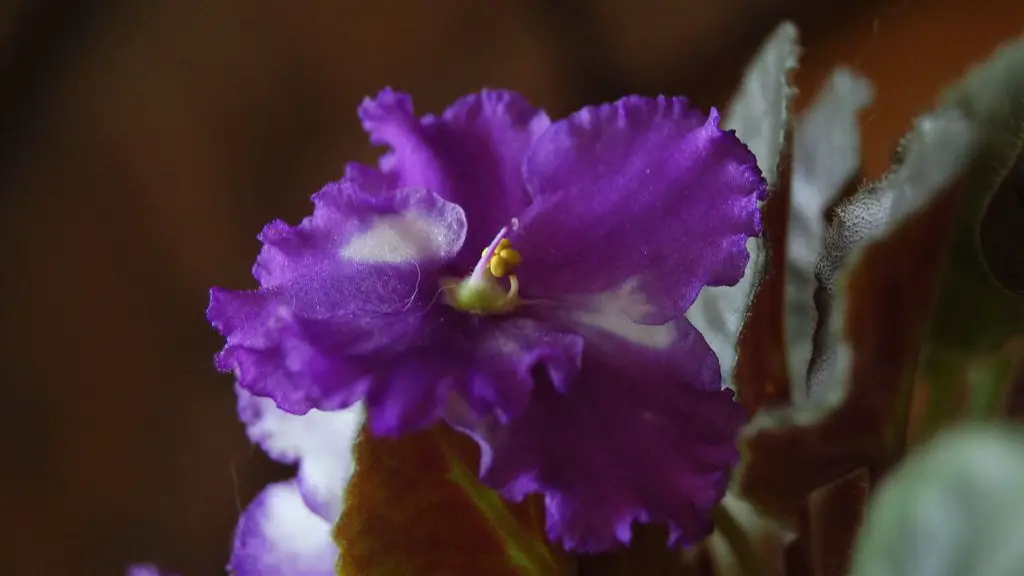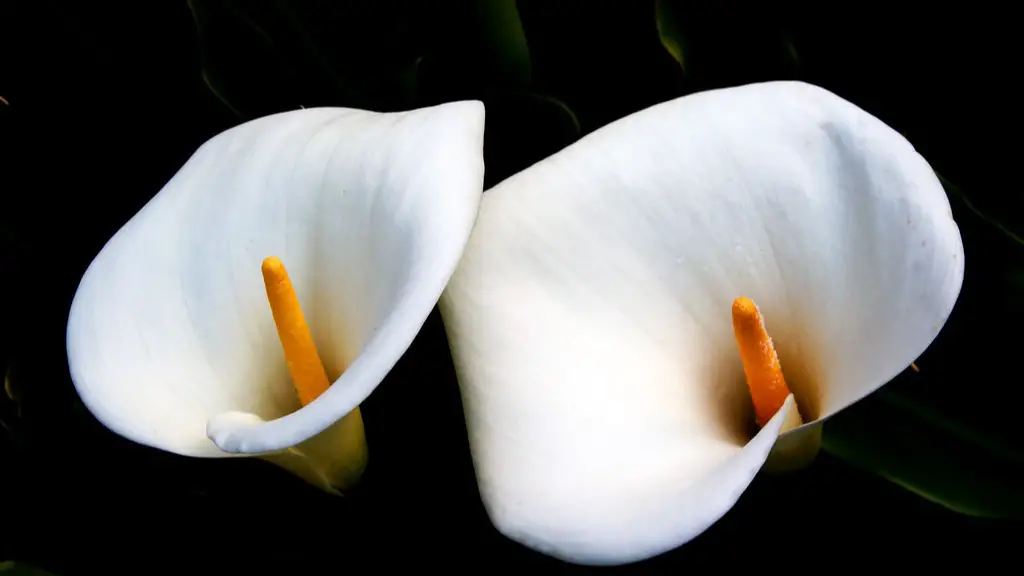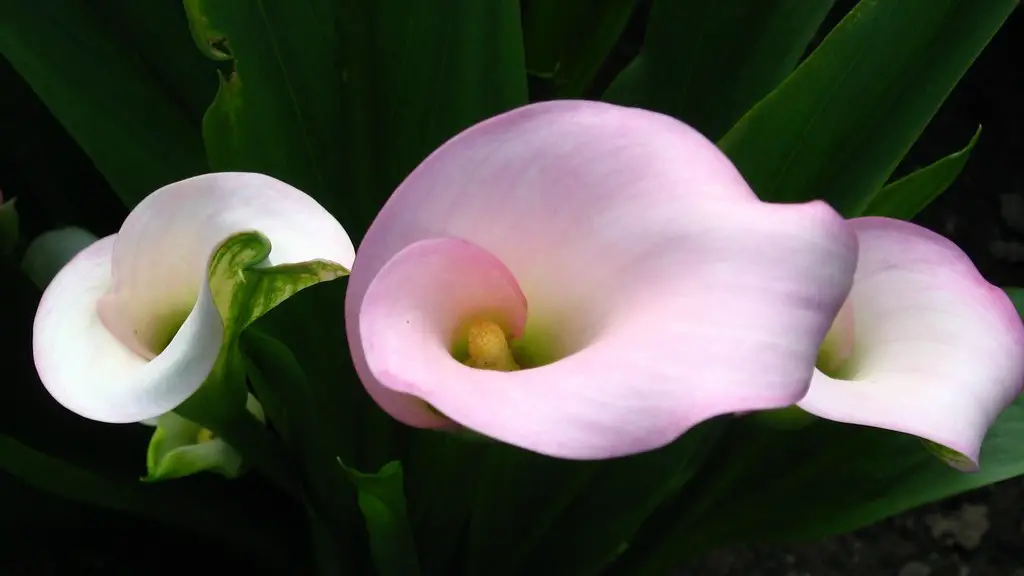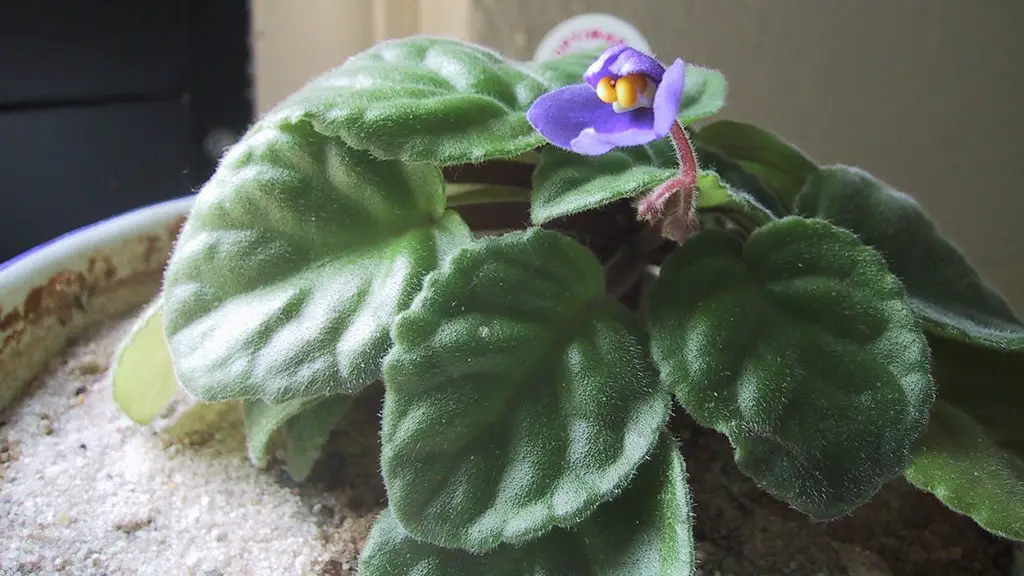If you’re wondering how often to feed your African violets, the answer is every other week. African violets are a type of plant that doesn’t need a lot of nutrients, so you don’t have to worry about over-fertilizing them. Just give them a little bit of food every other week and they’ll be happy and healthy.
African violets need to be fertilized regularly in order to maintain healthy growth. For best results, use a water-soluble fertilizer that is specifically formulated for African violets and other houseplants. Apply the fertilizer at half the recommended rate on the package instructions, and fertilize every other week during the active growth period.
How often do you water and feed African violets?
African violets need to be watered about once a week, or when the top of the soil feels dry to the touch. Overwatering can kill a plant, so it’s best to let the soil dry out between waterings.
It is important to give African violets the right amount of sunlight. They prefer bright, indirect sun. Too little sunlight causes them to stretch for the light and produce few or no flowers. Too much sun can burn the leaves. An east-facing window is ideal, especially with a sheer curtain to block the sun’s harshest rays. They also need eight hours of darkness every night.
Can you over fertilize African violets
If you see orange crystals on the leaves of your African Violet, it means that the plant has been over-fertilized. This can cause serious problems and even be fatal to the plant. If you see these crystals, stop fertilizing the plant and try to flush the excess fertilizer out of the soil.
African violets are a type of plant that is native to Africa. They are known for their beautiful flowers, which can be either purple or blue in color. African violets need to be fertilized regularly in order to grow and bloom properly. The recommended ratio for African violets is 14-12-14. There are commercial formulas available specifically for fertilizing African violets, but many of these use urea as the nitrogen source.
Should I mist my African violets?
It is important to water African violets carefully so that the crown of the plant does not become saturated with water. Water on the foliage may cause permanent leaf spotting, so it is important not to mist the foliage. Use water that is room temperature.
If you grow plants in bright, indirect light, they will have the best color and blooms. A plant stand three feet away from a west- or south-facing window is an ideal location. Plants will still grow when situated right beside north- or east-facing windows, but leaves will be thin and spindly, and plants less likely to bloom.
What are the secrets to great African violets?
African violets are a type of plant that need indirect sunlight. If they are placed in direct sunlight, the leaves can get burnt. It is best to place them in a north- or east- facing window. Also, it is important to keep the plants away from cold glass and to rotate the pot once a week so all leaves receive light. During winter months, you can extend the daylight by placing African violets under a grow light.
Watering your plant is important to keeping it healthy and encouraging blooming. Keep the soil moist to dry and allow the soil around the roots to dry out before watering. You can water from the bottom by placing the plastic grower’s pot in water and allowing the plant to absorb the water for no more than 30 minutes.
What month do violets bloom
While some people consider wild violets to be a lovely decorative plant for gardens and landscaping, others consider them to be a bothersome weed because they display an aggressive behavior that is very hard to control.
To clean African Violet leaves, fill a spray bottle with room temperature or tepid water. Spray the leaves with water and clean the leaves using your fingers, rubbing the top and bottom part of the leaves. You can also use the spray bottle method to clean the African Violet leaves with liquid soap.
Is coffee grounds good for African violets?
Coffee grounds are slightly acidic and contain nitrogen, which helps plants grow healthy foliage. Occasionally sprinkling used coffee grounds on top of your African violet potting soil can be good for the plant.
If your African Violet plant has been over-watered, the soil will retain too much water This retention of water will cause the leaves and /or leaf stems to turn soft, limp or mushy. The plant will then be more susceptible to problems such as root rot, leafSpot, and other fungal diseases. If you think your plant has been over-watered, gently remove it from the pot and check the roots. If they are soggy or smell bad, then the plant has been over-watered. You can try to save the plant by carefully removing the wet soil and replanting in dry soil.
What does Epsom salt do for African violets
Epsom salts are a great way to provide plants with essential magnesium and sulfur. These two minerals are needed to produce beautiful blooms and healthy foliage. To use, mix one and a half teaspoons of Epsom salts in a quart of tepid water and swirl to dissolve. Water your African violets (below the leaves) with this solution once a month.
If you’re African violet is finicky about its water, make sure to let the water sit for a bit before giving it to your plant. It’s best to let it sit for 24-48 hours, but if you can’t, then let it stand for at least an hour. This will help ensure that the water is either tepid or at room temperature, which is what your plant needs.
Do African violets need deep pots?
If you’re growing African violets, it’s best to use shallow pots with good drainage. African violet roots don’t go very deep, so they like to spread out sideways. That means you need to be careful not to use a pot that’s too deep, or your plant will have trouble getting the moisture it needs. Terra cotta pots with a water reservoir are a good option for African violets, as they help to keep the roots moist without causing problems with drainage.
The answer is yes you can get African violet leaves with not a problem at all however You must use more than one leaf to ensure that the African violet gets the full amount of nutrients it needs. Also, make sure to fertilize the African violet to keep the leaves healthy.
Final Words
It is recommended that you feed your African violets every two weeks using a diluted fertilizer solution.
The African violet is a one of the most popular houseplants. They are relatively easy to care for, and can bloom year-round with the proper care. When it comes to feeding African violets, the general rule of thumb is to fertilize them once a month using a water-soluble fertilizer that is specifically made for African violets.





